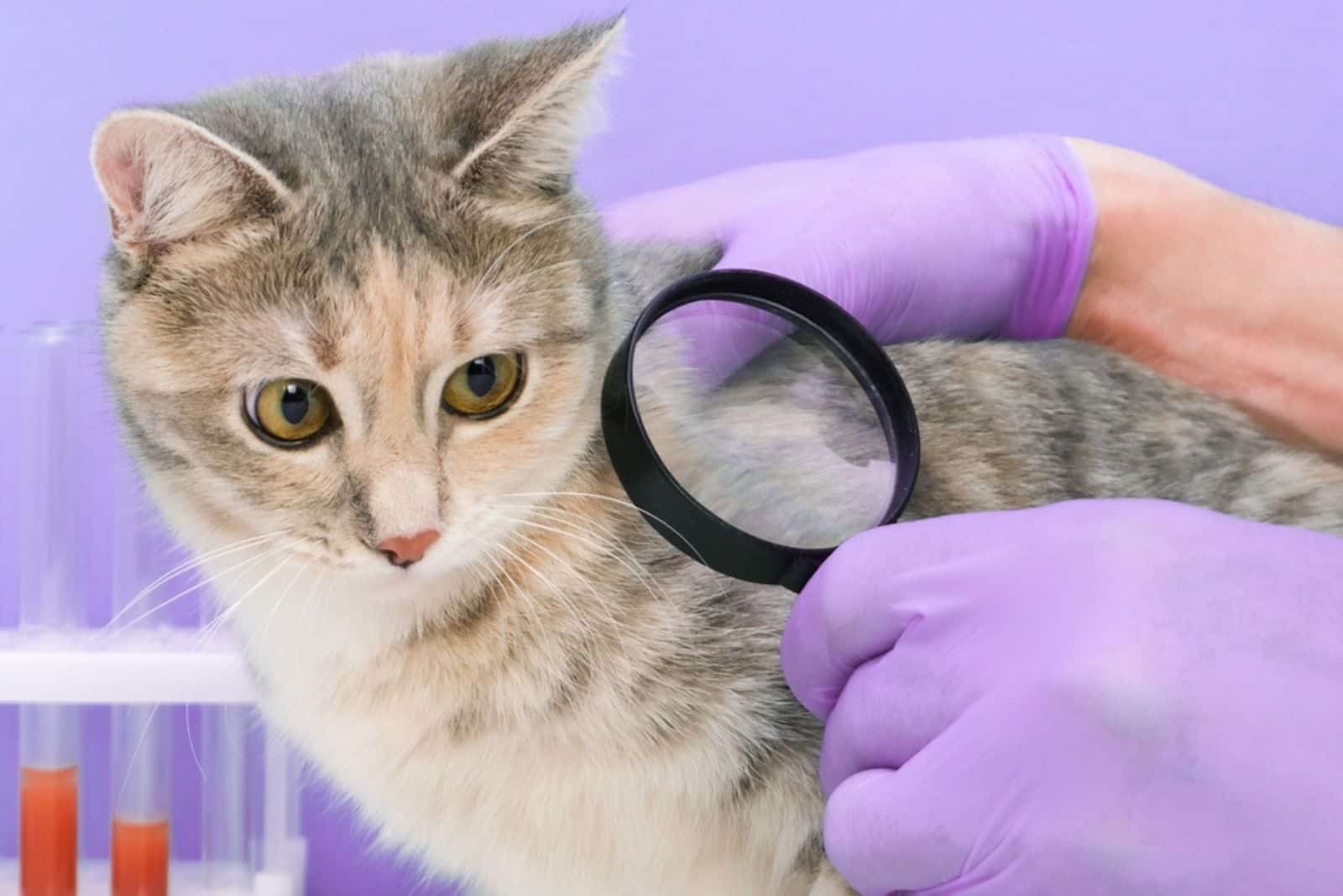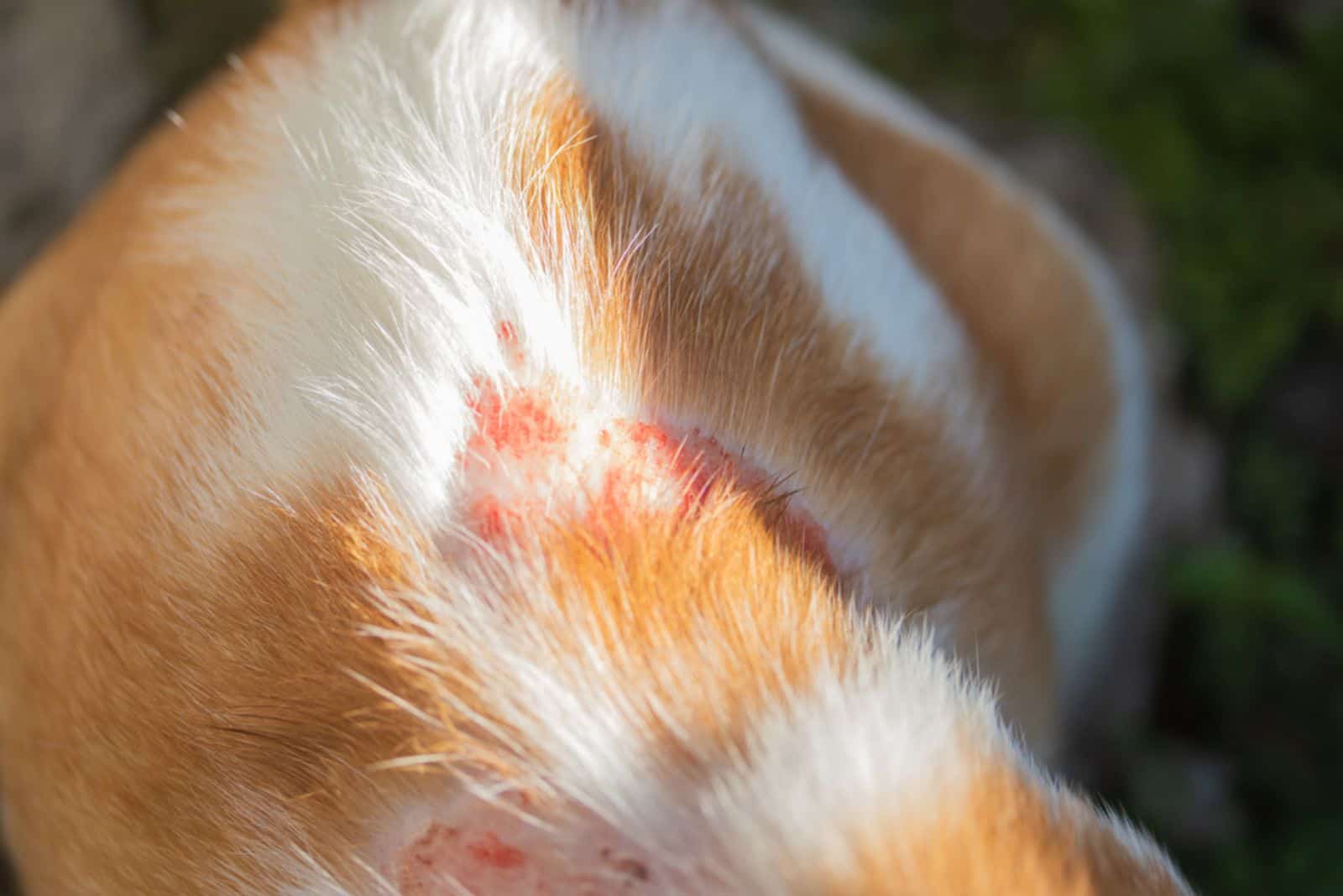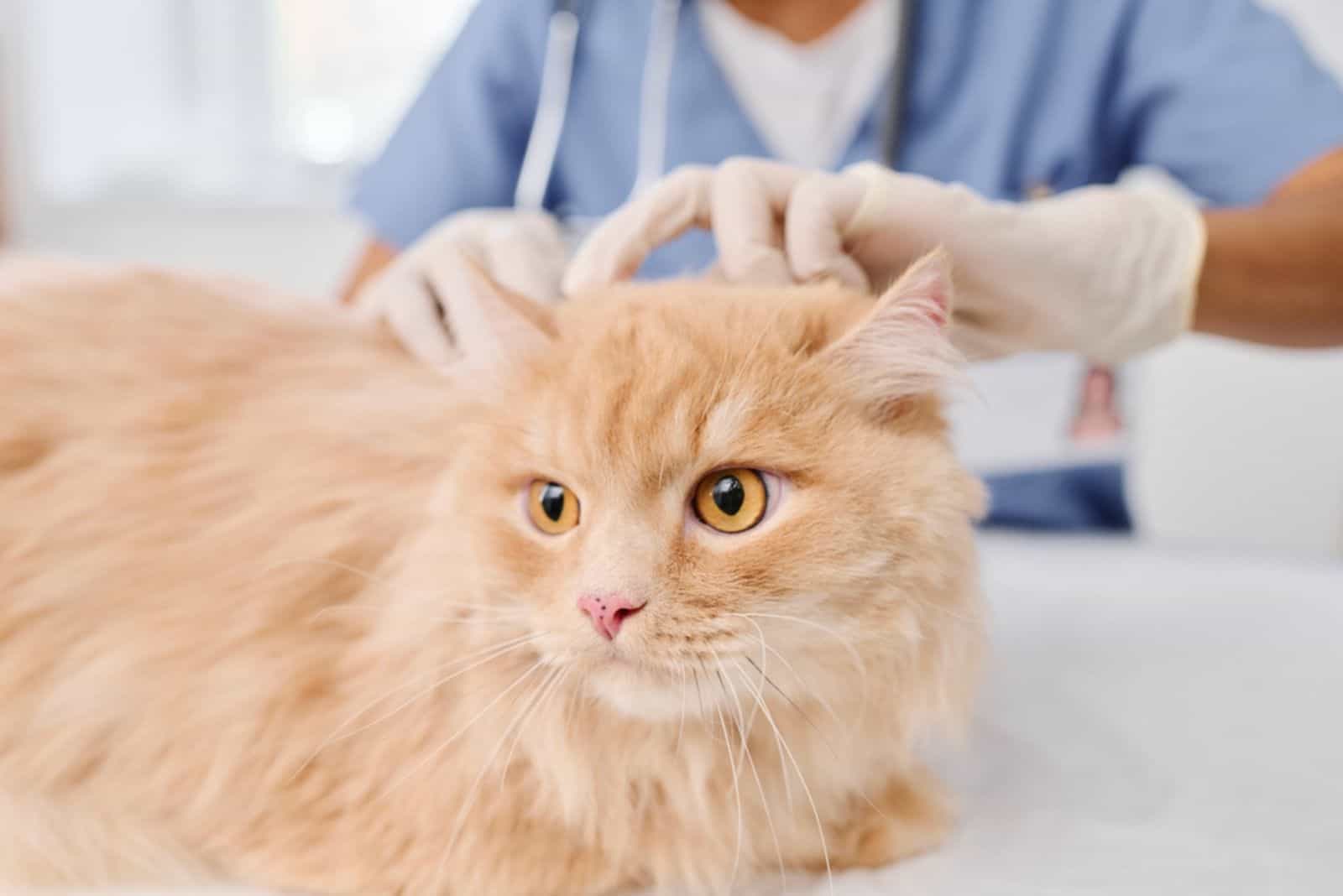About Cat Skin Tags – How To Know If They’re Benign Or Not?

I’m guessing you’ve noticed or felt an unusual lump somewhere on your cat’s skin. Sweat, friction, old age, or diabetes, can all cause cat skin tags. A diagnosis from your vet is required in order to confirm whether or not your cat’s skin tag is malignant.
Noticing a strange lump under your cat’s fur might be scary at first, but rest assured, they’re mostly harmless. Even though unusual and scary at first, your cat’s skin tags are, in most cases, benign.
However, in some cases, they can indicate something more serious, which is why it’s important to know the different types of skin growths your cat can have, and how to differentiate between them.
What Are Cat Skin Tags?

As you are aware, cats can have skin tags. These are basically small pieces of skin, collected at a certain spot, that consist of collagen and blood vessels. They can appear literally anywhere on their body.
Skin tags on cats are mostly reddish, or pinkish, similar to the color of their flesh. They can be slightly raised, so you feel them on your cat’s skin, or they can dangle a bit from the skin.
Some skin tags grow as time passes, and some stay as they were from the beginning. Cat skin tags are usually benign. They’re not painful for cats, but they can sometimes bleed if your cat happens to scratch them or catch them on something and tear them a bit.
This can make skin tags prone to infections, so if you notice there’s blood on your cat’s skin tags, contact your vet. Most growths and tags on your cat’s skin look similar, which can easily trick you.
Sometimes you might notice a growth and think that it’s just a skin tag, but it can be something else – a wart, for example.
Usually, these things are also harmless, but there are some growths that might appear to be a skin tag, but actually be something dangerous, like a tumor or a tick.
This is why it is extremely important that you learn how to identify and discern between the different types of skin growth that your cats can have.
Are They Normal?
If you notice a skin tag on your cat, it will seem unusual at first, but it is normal. Skin tags are not malignant; they don’t carry any cancerous cells, and are typically harmless for cats.
Cats, mostly, don’t even notice them – at least not until they get caught on something and their tags bleed.
There is only one occasion where a skin tag might be dangerous for your cat, and that is when it’s located on your cat’s mouth or eye. This makes it hard for your cat to eat or to see, depending on where the tag is located.
This affects your cat’s overall quality of life, and it can also lead to more severe issues. If this happens, take your cat to the vet for a professional diagnosis and to see what can be done.
Why Do Cats Get Skin Tags?

There is actually no definite answer to the question “why”. There are some common reasons, which I’ll mention below, which can cause skin tags.
It can be one of the following or a mix of these reasons, but the only way you’ll be sure is by having a vet diagnose your cat.
• Hormonal imbalance – this can mean there are too few or too many hormones, but both can affect your cat’s body and contribute to the development of skin tags.
• Friction – cats can also develop skin tags because of friction (this is the most common cause) between parts of the skin. This is why they are most commonly found in your cat’s leg joints, armpit area, chest, or anywhere in between folds of skin.
• Old age – your cat’s skin becomes looser as it ages, which leads to more friction, which I already mentioned is a major cause of skin tags.
• Diabetes – some scientific studies, (like the one done on Cutaneous Xanthoma Causing Hypercalcaemia in a Cat), show that cats that have diabetes mellitus are more prone to developing skin tags due to insulin resistance.
Some articles claim genetics is also at fault, and that certain cat breeds are more predisposed to the development of skin tags. However, I did not find a scientific article that proves this.
How To Discern Between Skin Tags, Skin Growths, etc.

It is highly important to have a vet diagnose a skin tag or growth on your cat’s skin. It can be completely harmless, but it can indicate something severe too.
You need to be aware of the different types of cat skin tags and growths so that you can easily differentiate between them if they occur in the future.
• Abscesses – these are swollen growths that are pus-filled, and they usually appear in spots where your cat’s been bitten or scratched. An abscess is usually painful for cats and it needs veterinary care.
Your vet will probably prescribe antibiotics or anti-inflammatory meds to ease your cat’s pain and treat the abscess.
Read also: How Do Cat Abscesses On Tail Occur?
• Ticks – sometimes you might see a growth on your cat’s skin (which will seem normal) and think that it’s just a harmless skin tag, but it might be a tick. Always look closely, because ticks stick to your cat’s skin and can easily fool you.
However, your vet will immediately know the difference and safely remove the tick from your cat’s skin.
• Warts – these occur rarely in cats, but it is possible. Most viral warts, known as papillomas, are scaly and flat. They can easily be transmitted from one cat to another, but they also disappear on their own after a certain period.
• Acne – as surprising as it may sound, cats can have acne too. Cat acne most commonly appears on the chin, but it can appear on the cat’s face too.
If you notice little black specks on your cat’s chin or face, contact your vet and they’ll probably prescribe a medicine or a wash to help you get rid of the acne.
• Bug Bites – bug bites, mosquito marks, or bee stings, are also very common culprits behind lumps on your cat’s skin.
• Skin Tumors – this is the most severe form of skin growth. If you spot that a growth on your cat’s skin is changing its shape and/or growing, there is a high chance that it is malignant.
If you notice something like this, go to the vet as soon as you can! Your vet will perform a check-up, run the necessary tests, and establish a diagnosis that will let you know where you stand.
Diagnosing A Skin Tag On Your Cat

Talking to your vet about things like this, and having your cat thoroughly checked out, is always a good idea. If you are concerned about your cat’s health, always discuss it with your vet.
Your vet will put your mind at ease and, in the case of skin tags, let you know what exactly is on your cat’s skin. When you take your cat to have its skin tag examined by a vet, most probably, the first thing they’ll do is perform a biopsy.
This way, they’ll determine if the growth on your cat’s skin is malignant or benign. Your vet takes a little sample of your cat’s skin tag and performs an analysis.
Note: we’ve encountered a number of cats that did not react well to this approach, so a clipnosis procedure showed as effective.
This is a method that involves clips, which a veterinarian uses to gently press and squeeze the skin of a cat to calm it down. It is perfectly safe and painless, and it makes vet visits much easier.
Treatment

Cat skin tags usually don’t require specific treatment, or any kind of treatment. This is because they usually go unnoticed, as they are mostly harmless and painless.
If it’s different than this; perhaps your cat’s skin tag becomes painful and you see your pet is hurting, it is best to have it removed. However, don’t try to do it yourself. Talk to your vet and take your cat to the clinic to have the skin tag removed.
There are different methods for removing a cat’s skin tags and you will need to talk to your vet about which method they’ll use to remove your cat’s skin tag.
Your vet can freeze the skin tag, which will cut off any blood flow to it and cause the skin tag to fall off.
Your vet can also cauterize the skin tag, meaning they’ll burn the skin tag off and seal the skin. However, the most common method for removing a skin tag in cats is something called ligation.
This is a painless and commonly used procedure. Your vet will wrap a string around your cat’s skin tag, which will stop the oxygen and blood supply, after which the tag will die and fall off. Talk to your vet, as they’ll know which method is best for your cat.
Your vet can also simply cut off the skin tags, but it might be painful and it would involve your cat being under general anesthesia.
Closing Thoughts On Cat Skin Tags
When you notice an unusual lump on your cat’s skin, it’s scary in 99% of cases. However, luckily, there’s usually nothing to worry about. These lumps you feel when you pet your beloved cat, are usually just harmless skin tags.
As I’ve explained above, there are different types of skin growths that your cat can have, most of which are benign and completely painless. They’re pieces of skin, usually flesh-colored, which (in most cases) disappear on their own after a while.
However, if you ever get worried about your cat’s health, call your vet. It’s always best to be sure, and if there happens to be an issue, it’s always good to act on time to reduce any possible damage.






